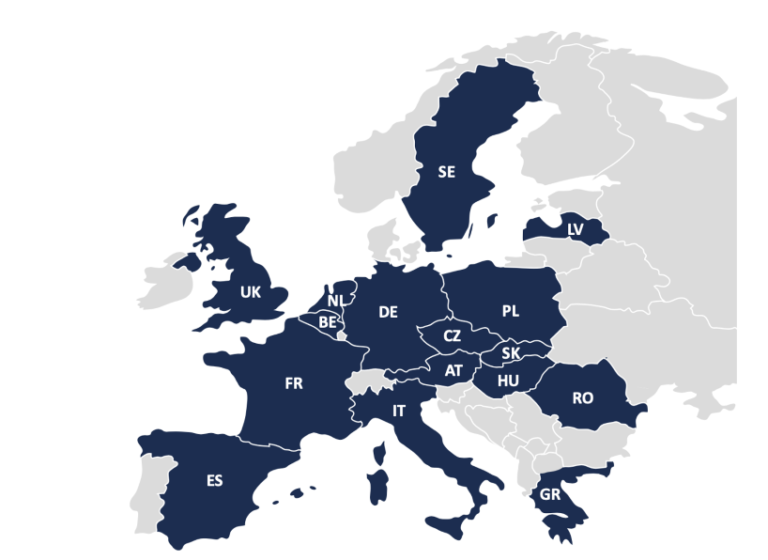An intriguing pattern emerges following the second round of the French presidential election. The incumbent centrist president, Emmanuel Macron, was re-elected with 58.5 percent of the vote, defeating his far-right challenger Marine Le Pen, who won 41.5 percent. However, 63 percent of the French hope he loses the National Assembly elections in June, writes Michel Gurfinkiel in an analysis in The New York Sun.
According to the author, a strange map emerged in the second round of the French presidential election held on April 24. On the face of it, the incumbent centrist president, Emmanuel Macron, defeated his far-right challenger, Marine Le Pen, by 58.5 percent of the vote against 41.5 percent. Nevertheless, the editor Gurfinkiel believes that Le Pen’s performance can hardly be called an underachievement, as she improved by almost 8 percent compared to her 2017 election result. She led in 28 départements and in more than 50 percent of communes nationwide. The National Rally’s voter base was once limited to northern France and Provence, but this time Le Pen won a significant number of votes in eastern France or Occitania, and a majority of votes in Corsica.
However, the most spectacular successes were achieved overseas in far flung French territories such as Saint-Pierre and Miquelon in the Northern Atlantic; Guadeloupe and Martinique in the Caribbean; Guyane in South America; La Réunion and Mayotte in the Indian Ocean; New Caledonia, Wallis and / Futuna, and French Polynesia in the Pacific. In terms of constitutional and legal terms, these territories are no different than Metropolitan France, however, their total population of 2.7 million is racially, ethnically and religiously diverse.
Ms. Le Pen’s most consequential advance took place in the far flung French overseas territories, the global population of which is more than 2.7 million: While they are just as French as Metropolitan France in constitutional and legal terms, these territories are different in terms of race, ethnicity, and religion. Afro-French communities predominate in the Caribbean, and Melanesian or Polynesian groups in the Pacific. La Réunion is a melting pot of Europeans, Africans, and Indians. As for Mayotte, it is African and Muslim.
One would have expected that these regions with a significant Afro-French, Melanesian, Polynesian, African, Indian etc. population would reject a “Fascist” Marine Le Pen, which used to be the case with her father, Jean-Marie Le Pen, the founder of the National Front. However, in the second round of the 2022 elections, the younger Le Pen swept most of Overseas France. The stunning reversal could be explained with the politician’s departure from her father’s original far-right agenda, transforming the National Front into a more inclusive, nonracist populist party, renaming it National Rally.
In the first round, on April 10, four of these five overseas regions came out as left-wing strongholds, voting to the far-left champion, Jean-Luc Mélenchon. One must then conclude that Mr. Melenchon’s overseas voters switched in large numbers to Ms. Le Pen in the second round. And the same holds true of many constituencies in Metropolitan France — especially in small and middle-size communes. While there are many places where the far-left joined forces with Monsieur Macron or abstained rather than supported Ms. Le Pen, a sizable leftist vote in the first round was often a prerequisite for a Le Pen surge in the second round. Conversely, one may surmise that many Le Pen voters would have been ready to support Monsieur Melenchon against President Macron, in the case he, rather than her, would have been qualified for the second round. What is remarkable here is that this was not so much the result of party strategies than of party sociologies, writes Gurfinkiel.
Madame Le Pen’s National Rally, Monsieur Melenchon’s Popular Union, and such lesser players as Eric Zemmour’s Reconquest Party, Yannick Jadot’s Green Alliance, or Fabien Roussel’s Communist Party compete for what has been described as “peripheral” France — that part of the country outside the main urban centers. They share a common devotion to the post-1945 Welfare State, and a culture of frustration, anger, and suspicion regarding the European Union and an American-led globalization.
Garfinkiel explains that the last dividing line among these parties is the issue of immigration, which is seen as a deadly threat by Zemmour, a natural outcome by Melenchon, while Le Pen is dropping it from her platform, in line with her new inclusive stand. The question is whether this Right-Left convergence can last until the National Assembly elections scheduled for June 12 and 19? And provided it can, who will benefit from it?
In her concession speech, Marine Le Pen described the coming parliamentary ballots as a “third round” that may cut President Macron’s victory to size. Short of a solid majority at the National Assembly, the re-elected president will have to share his extensive powers with a hostile prime minister, something known as “cohabitation.” An OpinionWay poll released today discovered that 63 percent of the French see it as a desirable development. An Ipsos poll says that 56 percent of the French actually want Mr. Macron to lose the June elections.
According to Garfinkiel, due to the electoral law that provides a seat-by-seat majority ballot for the National Assembly, cohabitation may be ultimately averted. Since Macron came out first on April 10 in 256 constituencies out of 566, he would theoretically need 27 additional seats only in order to get a majority, which he could be achieved through some manoeuvring between rival opposition candidates or with the help of outgoing conservative members of Parliament. However, even a June victory might not settle the French political conundrum. If the National Assembly is to the liking of the president, one has to beware of a fourth round played in the street. As during the Yellow Vests crisis of 2018-19, concludes Garfinkiel.








